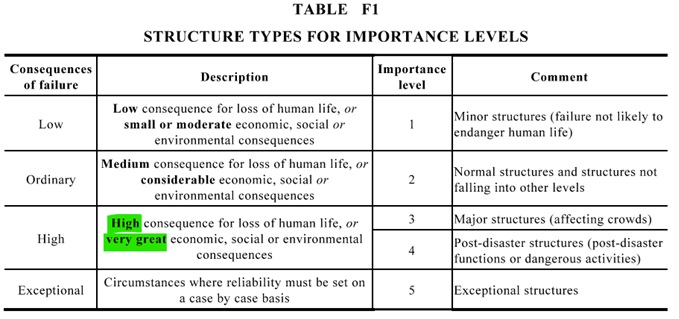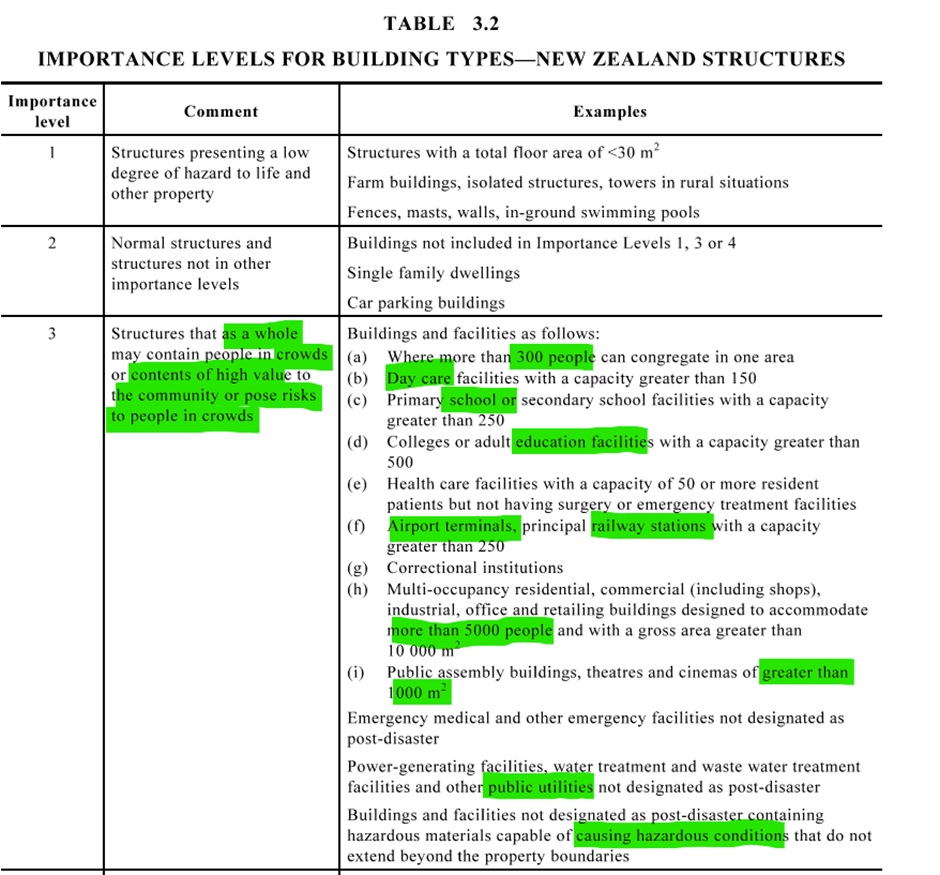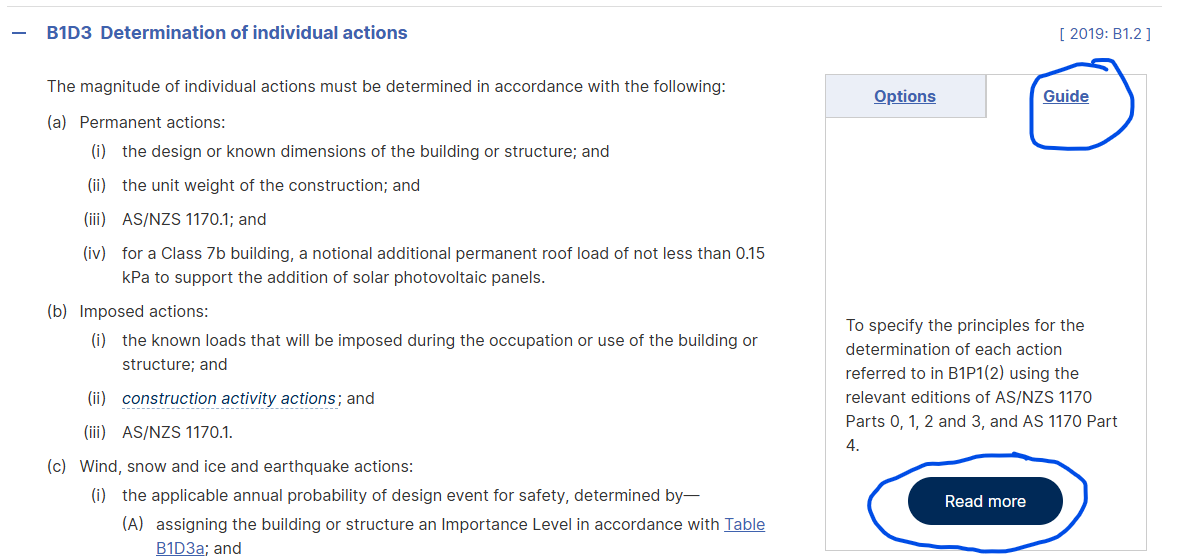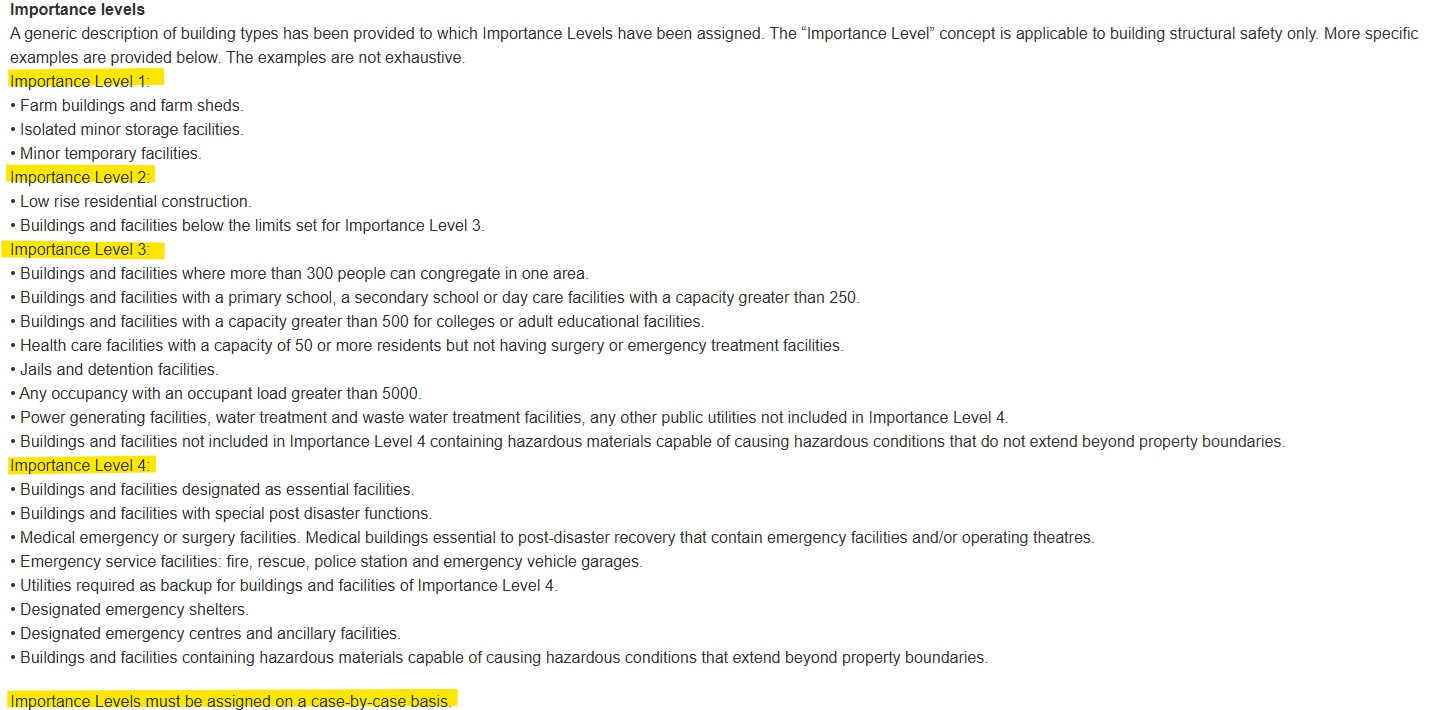understanding importance levels
Understanding Importance Levels
The assignment of Importance Levels, as defined in AS/NZS 1170.0:2002 (refer to screenshot below), is based on the potential consequences of structural failure—specifically in terms of human life safety and economic impact. IL3 applies to buildings where failure could have significant consequences, such as structures that house large numbers of people or serve critical community functions.

Section 3 of AS/NZS 1170.0 (NZ) also provides further context, describing IL3 as relating to “community buildings” or “community facilities,” highlighting its intent toward societal-critical structures.

As detailed in the book Wind Loading Handbook for Australia & New Zealand – Background to AS/NZS 1170.2 Wind Actions (which can be purchased from the Australasian Wind Engineering Society), the importance level for a structure should be determined using one of the following sources. Most standard buildings, such as houses, car parks, and warehouses, are commonly designed to IL2.
- The National Construction Code of Australia (BCA) for buildings in Australia (Australian Building Codes Board, 2022) – Table B1D3a (snapshot below),
- Section 3 of AS/NZS 1170.0 for structures in New Zealand,
- Appendix F of AS/NZS 1170.0 for non-BCA structures in Australia.




- Confirm the Importance Level (IL) for which the building was originally designed (typically noted in the structural design drawings); or
- Provide sufficient architectural drawings that either state the IL directly or allow us to determine whether IL3 applies based on building use; or
- Confirm for us to carry out the solar racking design under IL3 (even if the original intent for the parent building was IL2), as a conservative approach.
Discussion on Solar Panel Racking System Importance Level
The above discussion on importance levels is mainly for permanent building structures and assuming the same IL for solar panels racking design as that of the parent building.
Since solar panels are considered non-BCA structures, their classification falls under Appendix F of AS/NZS 1170.0. The solar racking system is an ancillary structure mounted onto the primary building. While its failure is undesirable, it typically does not pose the same risk to human life or economic consequence as the failure of the main building itself. Therefore, it makes sense to assign a lower IL to ancillary structures—so long as their failure does not compromise the building’s integrity or occupant safety. However, this should not be taken as a blanket permission to assign IL2 to solar panels on IL3 buildings.
Solar panels are commonly designed for a 25-year design life, which corresponds to:
- IL2: 200-year return period
- IL3: 500-year return period
In Wind Region B1 as per AS/NZS 1170.2:2021:
- IL2 design wind speed = 52 m/s
- IL3 design wind speed = 57 m/s
Since wind pressure is proportional to the square of the wind speed, this represents a ~20% increase in pressure for IL3: (57² / 52² ≈ 1.20).
Industry Practices and Guidelines
There is no specific Australian Standard that mandates the Importance Level for solar panels, whether mounted on the roof or ground. Most engineers prefer to match the IL of solar panels to the host building (particularly for IL3 public buildings).
This perspective was also presented in a 2023 Engineers Australia article (https://www.engineersaustralia.org.au/news-and-media/2023/10/findings-design-wind-loads-solar-panels), which suggested applying the same IL as the parent building for consistency. However, solar panel racking systems do not function as primary structural systems. Their failure, while a commercial concern, typically does not imply catastrophic failure of the host structure.
Available Reference to Published Examples
The Wind Loading Handbook for Australia & New Zealand includes relevant examples:
- Example B.13: Solar panels on a warehouse in Adelaide (Region A5) use IL2.
- Example B.14: Panels on a large fulfillment warehouse in Ipswich (Region B1) also use IL2. For a 25-year life, the selected wind speed is V200 = 52 m/s, confirming IL2 is appropriate.
While the Importance Level of the host building is not explicitly stated in these examples, the scale and occupancy of the warehouses suggest substantial usage. Nevertheless, IL2 was adopted for the solar panels in those cases. This reference is provided solely to illustrate published examples of practice. It should not be taken as evidence that solar panels on an IL3 building can or should be downgraded to IL2, as the parent warehouses may themselves have been designed to IL2.
Referring back to Table F1 in AS/NZS 1170.0, IL3 is defined for situations where failure could cause:
- “High” consequences for loss of human life, or
- “Very great” economic, social, or environmental consequences.
This leads us to the following practical and reasonable questions:
- Does failure of the roof-mounted solar panels equate to “high” consequences for human life or “very great” economic loss?
- Can the potential failure of solar panels (e.g., $50k) be reasonably equated to the failure of an IL3 structure (e.g., $10 million)?
- Would failure of solar panels result in greater consequences than, say, a residential home (IL2) or a public carpark with many vehicles?
- Can the failure of an IL3 building truly be equated to the failure of a roof-mounted solar panel system? For instance, consider the structural compromise of a concrete slab in an IL3 building due to fire—such a failure could initiate a progressive collapse, potentially causing a catastrophic “pancake” failure and placing hundreds of occupants at serious risk. Now compare this to the failure mode of a roof-mounted solar panel system, where the primary concern is uplift during extreme wind events. While a dislodged panel could pose a danger if it were to fall onto a public street or nearby property, the scale and immediacy of the risk is significantly different. Is the potential consequence of such a failure truly comparable to that of a collapsed theatre roof filled with thousands of people? This is the fundamental question we must consider when assigning Importance Levels, and why a blanket equivalence between solar racking systems and the host IL3 building may not always be justified.
Final Assessment
For clarity: where a building has been designated as IL3, we do not recommend downgrading the solar racking system to IL2 by default. Our approach is to adopt the host building’s IL unless specific project circumstances and stakeholder direction justify otherwise.
The above discussion is provided for background information only, and readers should apply their own professional judgement and knowledge when assigning ILs.